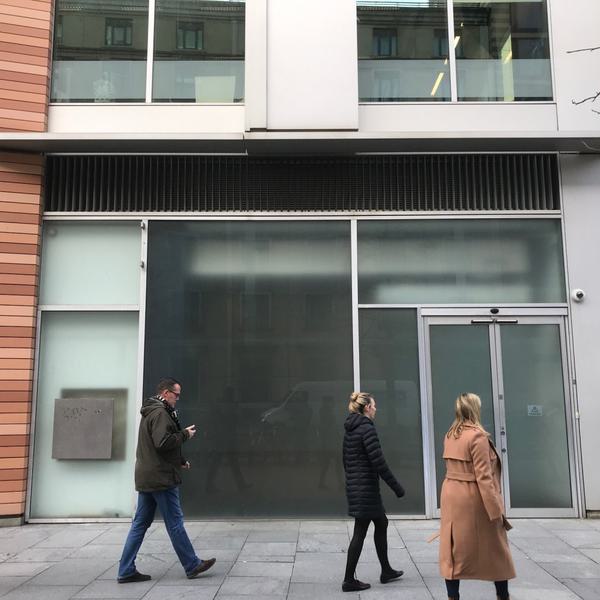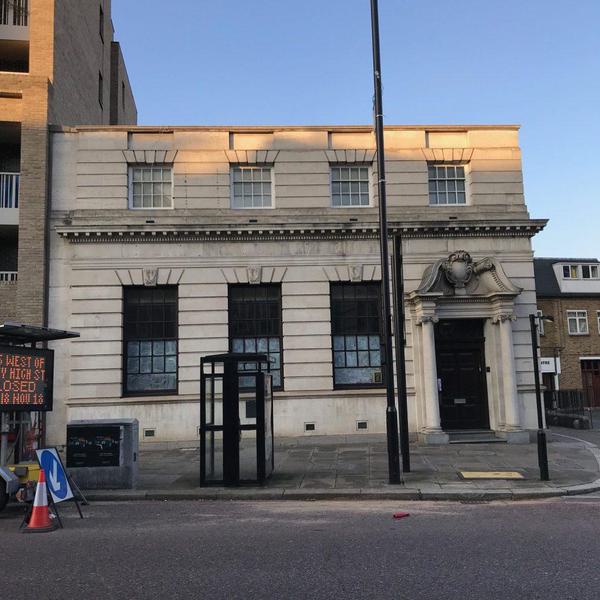Neither bank nor trendy wine bar

Tibbalds
We’re facing unprecedented change in the high street at the moment. This is widely considered to be part of a shift in people’s shopping habits from physical stores to online retailers, predominantly for its convenience and potential cost saving benefits. We are also losing other types of retailer due to creeping advances in technology, for instance the iconic HMV (other competitors such as Virgin and Blockbuster already gone) will be closing its Oxford Street store shortly.

However, one colossal change that has affected almost every high street across the country is the loss of the high street bank. Once the anchor of any small town and one of a number of branches in any larger town, they are moving out, fast. A 2018 parliamentary briefing paper reviewed this change and its social impacts, quoting the loss of over 1,000 branches in 2015 and 2018 and about 1,500 in 2016 and 2018 combined with the estimated number of communities which had lost all banks at the end of 2015 standing at 1,500.
Noticing this quite significant – and very quick – shift, I recalled the iconic advert from one of the big high street banks, now almost 18 years ago. This was part of an amusing advertising campaign by the bank to boast about the abolition of its branch closure programme, amongst other things – going against the trend of its competitors.
In the advert (and if you don’t remember it, see the videos to the side), an elderly customer states that her bank is “so enormous it’s streamlining branches, for [her] benefit and convenience” and later stumbles across her bank branch only to find that it’s closed and been converted into a “trendy wine bar”.
Since this time, a number of the main high street banks and building societies have closed, or are closing, a significant proportion of their physical branch network. There are numerous reasons for this including a change in the way we bank, as with retail, and consequently the decreased use (although by no means the complete cessation) of physical branches. In addition, the impact of the government’s recent change to business rates has raised concern from business owners and retailing experts over the rising cost of having a physical high street presence, including bank branches. However, my thoughts on this are more about what we do next in response to this trend rather than why it’s happening (which could form its own standalone piece of research).
The ‘trendy wine bars’ that might have once filled these empty buildings in 2001 (when the advert was aired), are seemingly a thing of the past. As the rate of branch closures increases, the empty stripped out buildings, soaped over windows and for sale signs now form a blot on the landscape of our local high streets and town squares. This is alongside the already struggling retail industry creating a double whammy of losses.
Not everywhere (seemingly, almost nowhere) has a local economy strong enough that can withstand this shift and fill the rising number of gaps in the high street.
Many will ask how the planning system can and should help unlock these sites for re-use. To me, there is little more tweaking that can be done to the planning system itself in order to assist any further. Permitted development rights already allow a landlord to change the use of a former bank to other retail uses without the need for planning permission and in some cases community or residential uses. I really don’t think it is this system which is preventing a quicker uptake in these units.
The Government’s recently launched Future of High Streets Fund provides a slightly different opportunity for such issues, recognising the change in consumer patterns and the need to improve the experience of town centres that brings convenience, valuable services and a sense of community. The plan earmarks £675m to assist high streets with the adaptation from their traditional purpose to a thriving future. How successful the Fund will be is not yet known and it will be an interesting one to watch unfold. However, this is exactly the kind of approach the government (as opposed to any struggling Council budget) needs to take to begin to tackle the issues which are going to continue into the foreseeable future – in every town. Do we need to change planning rules to react to this shift? No. Do we need to rethink the role of and investment in town centres in a more strategic way? Yes. Could my former bank branch become a trendy wine bar? If only.



Topics:
Related Updates

Marlcombe, East Devon selected as one of the New Towns

Tibbalds

Lizzie Le Mare attending LREF 2025

Tibbalds
Newham Council’s 50% affordable Carpenters Estate regeneration gets underway

Tibbalds
Stay In Touch
Sign up to our Newsletter
Subscribe to our newsletter to receive updates about making people friendly places.